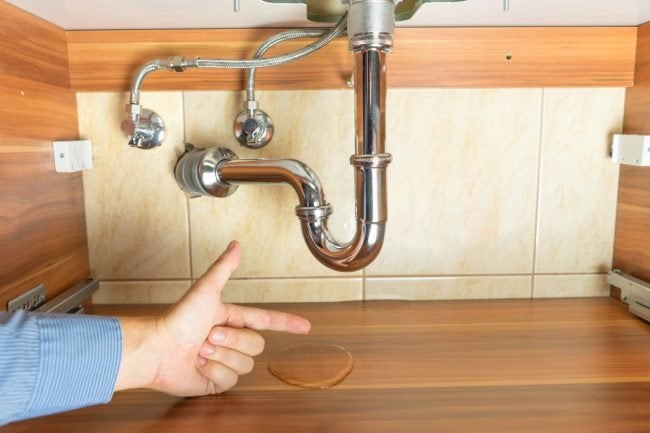Locating Concealed Water Line Leaks: 6 Ingenious Hacks
Locating Concealed Water Line Leaks: 6 Ingenious Hacks
Blog Article
Nearly everybody may have their unique rationale when it comes to Leaking water lines.

Early discovery of dripping water lines can mitigate a potential disaster. Aside from saving you money, it will certainly decrease the aggravation as well as aggravation. The moment you find a leak, calling your plumber for repair work is the best solution. Some tiny water leakages might not be visible. If you can not find it with your nude eyes, here are some hacks that help.
1. Check Out the Water Meter
Every house has a water meter. Checking it is a guaranteed way that aids you uncover leakages. For starters, turn off all the water sources. Make certain nobody will purge, utilize the tap, shower, run the cleaning machine or dishwashing machine. From there, most likely to the meter and watch if it will change. Because no person is using it, there need to be no activities. If it moves, that suggests a fast-moving leak. If you spot no modifications, wait a hr or 2 as well as examine back once again. This implies you might have a slow-moving leakage that might also be below ground.
2. Check Water Intake
If you identify unexpected modifications, regardless of your intake being the same, it indicates that you have leakages in your plumbing system. A sudden spike in your expense indicates a fast-moving leak.
A steady rise every month, even with the same routines, shows you have a slow-moving leakage that's additionally gradually escalating. Call a plumber to thoroughly check your residential or commercial property, especially if you really feel a warm area on your floor with piping beneath.
3. Do a Food Coloring Examination
When it comes to water intake, 30% comes from bathrooms. If the color in some way infiltrates your bowl during that time without flushing, there's a leakage between the storage tank as well as bowl.
4. Asses Outside Lines
Don't neglect to check your outside water lines also. Should water permeate out of the link, you have a loosened rubber gasket. One little leak can throw away heaps of water as well as increase your water costs.
5. Examine and also Analyze the Scenario
Homeowners must make it a habit to examine under the sink counters and also also inside closets for any kind of bad odor or mold and mildew growth. These two warnings indicate a leak so punctual attention is required. Doing regular inspections, also bi-annually, can conserve you from a significant issue.
Inspect for discolorations as well as compromising as a lot of appliances and also pipelines have a life expectancy. If you presume dripping water lines in your plumbing system, don't wait for it to intensify.
Early detection of dripping water lines can minimize a potential calamity. Some tiny water leakages might not be noticeable. Examining it is a proven means that helps you find leakages. One small leakage can lose bunches of water as well as spike your water bill.
If you think dripping water lines in your plumbing system, don't wait for it to intensify.
WARNING SIGNS OF WATER LEAKAGE BEHIND THE WALL
PERSISTENT MUSTY ODORS
As water slowly drips from a leaky pipe inside the wall, flooring and sheetrock stay damp and develop an odor similar to wet cardboard. It generates a musty smell that can help you find hidden leaks.
MOLD IN UNUSUAL AREAS
Mold usually grows in wet areas like kitchens, baths and laundry rooms. If you spot the stuff on walls or baseboards in other rooms of the house, it’s a good indicator of undetected water leaks.
STAINS THAT GROW
When mold thrives around a leaky pipe, it sometimes takes hold on the inside surface of the affected wall. A growing stain on otherwise clean sheetrock is often your sign of a hidden plumbing problem.
PEELING OR BUBBLING WALLPAPER / PAINT
This clue is easy to miss in rooms that don’t get much use. When you see wallpaper separating along seams or paint bubbling or flaking off the wall, blame sheetrock that stays wet because of an undetected leak.
BUCKLED CEILINGS AND STAINED FLOORS
If ceilings or floors in bathrooms, kitchens or laundry areas develop structural problems, don’t rule out constant damp inside the walls. Wet sheetrock can affect adjacent framing, flooring and ceilings.
https://www.servicemasterbyzaba.com/blog/how-to-detect-water-leakage-in-walls/

I stumbled upon that review about Top leak detection hacks while doing a lookup on the web. Be sure to take the time to share this blog entry if you appreciated it. Thanks so much for going through it.
Seek immediate plumbing assistance now. Report this page